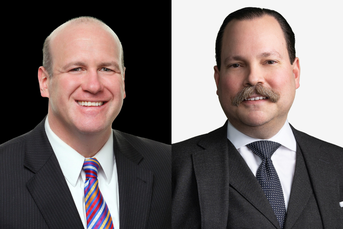State insurance commissioners closing in on stronger standard for annuity sales
 1
1
Critic says latest iteration falls short of true best-interest standard set by New York
State insurance regulators are closing in on a final rule to strengthen the investment-advice standard related to annuity sales, but a critic says the standard falls short of the best-interest protection provided in New York.
Earlier this week, the National Association of Insurance Commissioners released the latest version of its annuity suitability model regulation. It would require insurance professionals to act in the best interests of consumers when recommending an annuity purchase and would require firms to maintain supervisory systems to monitor the sales.
The model rule says a recommendation must be made “without placing the producer’s or the insurer’s financial interest ahead of the consumer’s interest.” It goes on to outline care, disclosure, conflict of interest and documentation requirements.
The state commissioners began the process of revising the annuity suitability standard in response to the Department of Labor’s fiduciary rule for investment advice regarding retirement accounts. That rule died in court, and now the states are trying to align their new standard with the Securities and Exchange Commission’s Regulation Best Interest for brokers.
A provision in the model rule draft says that the rule can be satisfied if an annuity sale is made by registered representatives who are in compliance with “applicable SEC and Finra rules.”
But one other standard is also on the books. In New York, the state financial regulator last year finalized a best-interest rule for life insurance and annuity sales. It requires that insurance professionals make recommendations based only on the interests of the consumer.
[Recommended video: Walt Bettinger lays out Schwab’s plan with zero commission trading]
Birny Birnbaum, director of the Center for Economic Justice, said the New York rule is stronger than the NAIC proposal.
“It’s not even in the same universe,” said Mr. Birnbaum, who has been part of the NAIC working group on the suitability rewrite. “The New York regulation is actually a best-interest standard. [The NAIC model] doesn’t seems to us to be a best-interest standard. It seems to be repackaging suitability.”
He said the care obligation doesn’t require a recommendation that is in a consumer’s best interest but rather requires insurance sales to follow particular procedures. He asserted that the conflict of interest requirements don’t touch on compensation conflicts.
“There hasn’t been any effort with the disclosures to ensure they’re meaningful or to empower a consumer,” Mr. Birnbaum said.
But Kevin Walsh, a principal at Groom Law Group, said the state commissioners have strengthened consumer protection surrounding annuity sales.
“This looks like a big jump from suitability,” Mr. Groom said. “It looks like a strong rule.”
He said the New York rule ignores the reality that NAIC addresses: Professionals have to make a living. In that context, telling insurance salespeople not to place their interests ahead of the consumer’s makes more sense than asking salespeople to ignore their own interests.
“The NAIC interpretation is more meaningful, while the New York one may look stronger at first glance,” Mr. Walsh said. “It’s tough to require someone to go to work without taking their own interests into account.”
Insurance industry groups are backing the NAIC draft model.
“It requires significant enhancements to the standards that insurance producers will have to follow when working with their clients,” said Jason Berkowitz, chief legal and regulatory affairs officer at the Insured Retirement Institute.
He said most insurance professionals are already acting in the best interests of consumers and that the NAIC model rule would “give regulators a clear standard to rely on to go after bad actors.”
The New York rule and the NAIC model “both aim to ensure that producers are doing right by their clients,” Mr. Berkowitz said. But he praised the state commissioners for following a more open rulemaking process and allowing greater industry input on practical consequences of the changes.
The NAIC model rule will be open for comment until Nov. 26. It could be approved at the group’s fall meeting next month in Austin, Texas. It would then be up to each state to adopt the rule.
Register today for our Future of Financial Advice event on Nov. 20.
Learn more about reprints and licensing for this article.








